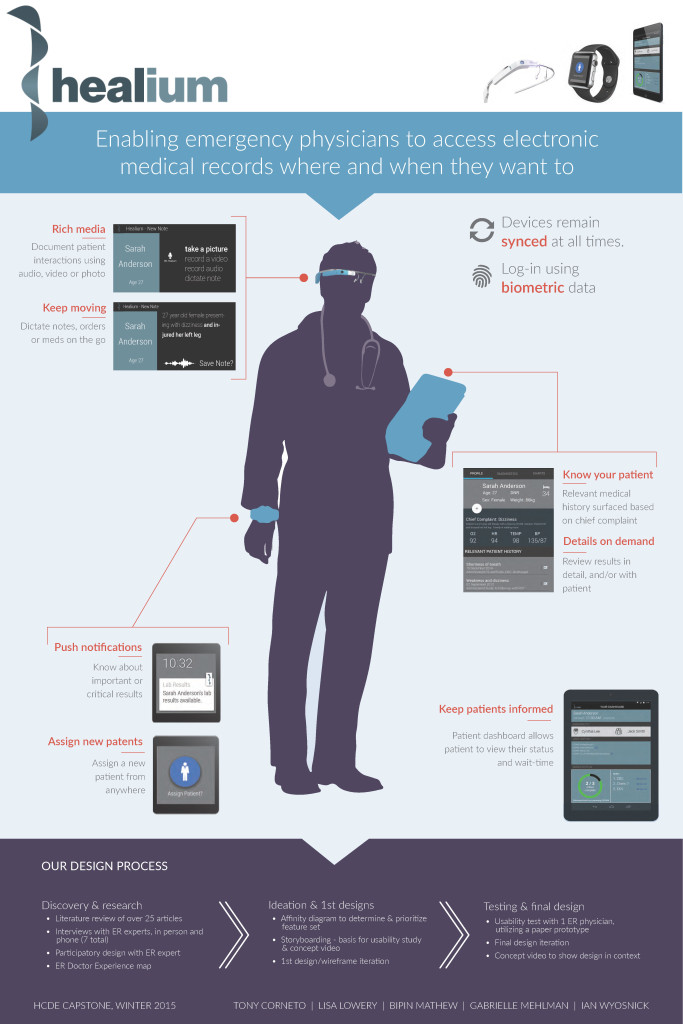Helping ER doctors get the information they need when & where they need it
Design problem: How can we decrease the amount of time a doctor in the emergency department spends using electronic medical records and improve patient care? This problem was brought to us by a local startup. The motivation for this problem is that it in a typical 10-hour shift, a physician clicks 4000 times, spending 56% of their time on the computer (44% in data entry and 12% reviewing test results and records) and comparatively only 28% in direct patient care. My role: I performed interviews, participated in design sessions, helped storyboard the final video and created/refined many of the visuals such as the experience maps (before and after), the final poster and the final report. Process: We triangulated our research using interviews (phone and in-person), a participatory design mapping session, and academic research. Our research culminated in the creation of an ER doctor experience map, which highlighted painpoints and needs throughout their daily experience. We began the design phase by creating an affinity diagram to determine and prioritize our feature set. We created a storyboard for our usability test, that we would later use for our concept video. With the first iteration of the design, we did a usability study with a paper prototype of printed out Illustrator designs. We iterated based on this study, and then created our final concept video. Result: From the research we identified 6 main opportunities that could define a unique and purposeful experience for Healium. These included: integrate real-time data, reduce barriers to accessing information, integrate rich media documentation, keep the patient informed, and expand integration with other auxiliary technology tools. We directly mapped these opportunities to the five main features that are incorporated in our final concept vision video. When we had entered this project, it was more-or-less assumed it would be a project for Google glass. But once we had our research, we realized it needed to be a device agnostic ecosystem. Originally our intention was to create one high-fidelity prototype on Google glass, but instead we decided to create a broader vision for the future of Healium, incorporating tablet and watch platforms as well. Team: Bipin Mathew, Ian Wyosnick, Lisa Lowery, Tony Corneto Date: Winter 2015
- Client:
- Skills:
- Project Url:
- Share:









